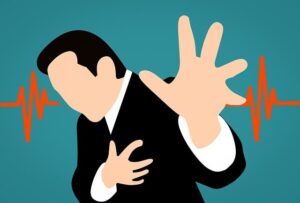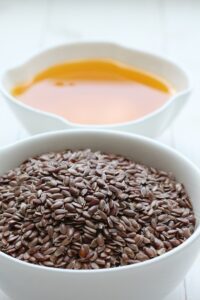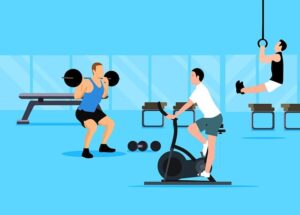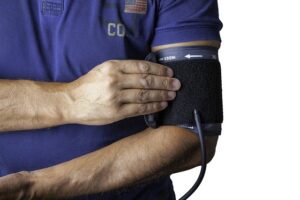A Step-by-Step Guide to Lowering Cholesterol Naturally
An elevated cholesterol level is known to be one of the most widespread health problems in modern society. However, in regard to treatment, people prefer, first, to use some natural ways and take medication only if required, in order to decrease cholesterol levels. Here is a step-by-step approach that has been proven to provide natural ways of how you can reduce cholesterol levels and ultimately the risk of heart disease.

Understanding Cholesterol
Before diving into the steps, it’s crucial to understand what cholesterol is and why it matters: Before diving into the steps, it’s crucial to understand what cholesterol is and why it matters:
- Cholesterol is a transportable and fat-like substance that circulates in the country’s blood pulses.
- However, your body requires some cholesterol in order to form proper cells.
- Elevated LDL or bad cholesterol increases your risk of heart disease.
- This form of cholesterol is commonly referred to as ‘good’ cholesterol, the HDL cholesterol, because it aids in the removal of other cholesterol from the circulation.

| Type of Cholesterol | Description | Impact on Health |
| LDL (Low-Density Lipoprotein) | Often referred to as “bad” cholesterol | Increases the risk of heart disease by building up in the arteries |
| HDL (High-Density Lipoprotein) | Known as “good” cholesterol | Helps remove excess cholesterol from the body, reducing the likelihood of plaque buildup |
| Triglycerides | A form of fat in the blood | High levels can contribute to the development of heart disease |
Now, let’s look at how you can reduce this cholesterol naturally, that is, without the use of drugs.
Step 1: Adopt a Heart-Healthy Diet
The foods that you consume have a great influence on the way your body handles cholesterol. Here are some dietary changes to consider: Here are some dietary changes to consider:
- Increase fiber intake: Olestra has been seen to reduce cholesterol through soluble fiber. Good sources include:
- Oatmeal and oat bran.
- Beans and lentils
- Examples of fruits are apples, pears, and berries.
- Foods like Brussels sprouts and carrots.

- Consume healthy fats: Use healthier fats by substituting partially hydrogenated oil or any other saturated and trans fats with others.
- The best thing that you can use when preparing your foods is olive oil or avocado oil.
- Consume foods rich in omega-3 fatty acids, such as salmon, mackerel, and sardines.
- Eat nuts and seeds as a snack

Limit cholesterol-rich foods:
Limit your consumption of:
- Red meat
- Full-fat dairy products
- Egg yolks (in moderation and used for other purposes, such as cooking)

- Add plant sterols and stanols: These compounds can act as a barrier to prevent the absorption of cholesterol in the digestive system. They’re found in:
- Some fortified foods
- Supplements (it is advisable to seek your doctor’s advice before you take any):
| Cholesterol-Friendly Foods | Benefits |
| Oats | High in soluble fiber, which can help lower LDL cholesterol |
| Avocados | Rich in monounsaturated fats, which can increase HDL cholesterol |
| Nuts and Seeds | Contain healthy fats, fiber, and plant sterols that can improve cholesterol levels |
| Fatty Fish | High in omega-3 fatty acids, which can reduce triglycerides and inflammation |
Step 2: Increase Physical Activity
Engaging in physical exercise, going for walks, and adopting other forms of physical exercise can help raise HDL cholesterol while lowering LDL cholesterol.
It also means that regular exercise is beneficial because it can increase the level of ‘good’ cholesterol and at the same time decrease the level of ‘bad’ cholesterol. Aim for:
- Between moderate-intensity aerobic physical activity and at least 150 minutes per week.
- 75 minutes per week of vigorous intensity aerobic physical activity.
- This means that strength training exercises have to be incorporated into the workout schedule at least twice a week.
It is better to begin on a low note and then increase your activity level. Some ideas include:
- Brisk walking
- Swimming
- Cycling
- Dancing

Step 3: Maintain a Healthy Weight
Weight reduction relieves your cholesterol levels in the event you have been overweight or languished through obesity. To achieve and maintain a healthy weight:
- If you are interested in knowing about your ideal weight, now is the time to uncover your BMI index based on your height.
- Learn to shed calories by using a nutrition plan and exercise.
- Emphasize the practices that can allow you to maintain a healthy weight instead of popular dieting programs.

Step 4: Quit Smoking
It caused a reduction of high-density lipoprotein cholesterol and an increased incidence of heart diseases. If you smoke:
- Set a quit date.
- Think of using nicotine replacement therapy or drugs (generally with your doctor’s advice).
One should look for help from one’s friends, family, or self-support groups.

Step 5: Limit Alcohol Consumption
Alcohol is known to raise cholesterol levels, especially if one takes too much of it regularly. If you drink alcohol:
- It is recommended that females should not take more than one alcoholic beverage daily, while males should take no more than two beers per day.
Select red wine moderate consumption appears to offer some gain to the health of one’s heart.

Step 6: Manage Stress
Stress is another causative factor in the chances of having high cholesterol levels. Incorporate stress-management techniques such as:
- Practicing prayer or some type of relaxation technique
- Deep breathing exercises
- Yoga
- Regular exercise
Many people do not take their recommended 7–9 hours of sleep each night, though this is advice that should be heeded.

Step 7: Consider Natural Supplements
There are certain natural supplements that have been found beneficial in reducing cholesterol, but before you embark on taking any supplement, you should consult your physician. Options to discuss include:
- Fish oil
- Psyllium
- Coenzyme Q10
- Red yeast rice

Step 8: Monitor Your Progress
Regularly check your cholesterol levels to track your progress.
- Before enrolling in a natural cholesterol-lowering plan, obtain a normal lipid panel.
- See your healthcare provider for a follow-up after 3–6 months.
- Follow-up your doctor on the next line of action depending on the results and his suggestions.

| Cholesterol-Friendly Foods | Benefits |
| Oats | High in soluble fiber, which can help lower LDL cholesterol |
| Avocados | Rich in monounsaturated fats, which can increase HDL cholesterol |
| Nuts and Seeds | Contain healthy fats, fiber, and plant sterols that can improve cholesterol levels |
| Fatty Fish | High in omega-3 fatty acids, which can reduce triglycerides and inflammation |
Conclusion
Reducing cholesterol levels depends on many factors, including diet, exercise, and other lifestyle changes; hence, this natural way is not as easy as it sounds. In this comprehensive guide, you can learn some of the most effective ways of beginning to improve your cholesterol and cardiovascular health for the better. As always, it’s about consistency, so give it one or two months at the least, and you will see improvement in your cholesterol levels.
It is always advised to speak to your doctor before adopting any new changes to your diet and exercise regimen if you have a pre-existing medical condition, or you’re on medication. If you are determined and committed, you do not need to take medication to lower your cholesterol and lower your chances of getting heart disease.
FAQ
What is the difference between LDL (bad) and HDL (good) cholesterol?
The main distinction that exists between LDL cholesterol (bad) and HDL cholesterol (good) is in the fact that bad cholesterol contributes to the buildup of plaque on the walls of arteries, while good cholesterol is associated with the removal of the aforementioned plaque.
Low-density cholesterol is referred to as “bad” cholesterol because it leads to clogging of the arteries. I have learned that this elevates the chance of getting heart disease. HDL, or high-density lipoprotein cholesterol, is referred to as “good” because it carries and removes LDL cholesterol from the arteries. It actually directs the LDL to the liver, where it is removed from the body.
What are the risk factors for high cholesterol?
High cholesterol means that a person consumes too many saturated and trans fats, is overweight or obese, and is not active enough. Other factors that will increase your chances of getting the disease are smoking and medical problems such as diabetes, thyroid problems, and so on.
In what way can a healthy diet reduce cholesterol levels in the body?
In particular, foods with fiber, healthy fats, and plants help prevent cholesterol. For this, it is good to take foods that are rich in fiber, such as oats, beans, nuts, and avocados, among others. In addition to this, they reduce the LDL cholesterol and, at the same time, increase the HDL cholesterol.
What kinds of activities are people with high cholesterol advised to engage in?
Exercises such as walking, jogging, or swimming are aerobic in nature and assist in reducing cholesterol. Weight training also has effectiveness in decreasing cholesterol levels, hence improving the health of the heart.
What do stress management techniques suggest to make cholesterol decrease?
Cardiovascular diseases can be triggered by stress, pressure buildup, and anxiety by increasing cholesterol levels. Stress hormones are reduced with the help of methods such as meditation, yoga, or deep breathing. This may have a tumor impact on cholesterol figures.
What do I get out of cholesterol by not smoking?
Most of the cholesterol response rates rise rapidly as soon as one quits smoking. Want to increase the ‘good’ cholesterol HDL, lower the ‘bad’ cholesterol LDL, and reduce the risk of stroke? This lessens the chances of heart diseases and what they cause in the heart.
In what ways can supplements help to manage cholesterol?
Other nutrients like omega-3 fish oils, plant sterols, and red yeast rice may be of assistance to cholesterol. Still, consult a healthcare provider before taking these substances, with special care for a man and special care for a woman.
It is quite relevant to ask why cholesterol levels should be checked periodically.
Another thing that can be done is that a cholesterol checkup should be done often. It assists in monitoring the advancement, identifying potential concerns, and sharing concerns about health. Decentralized self-scans and official screening tests are two different things. The home tests and the professional screenings are all crucial.